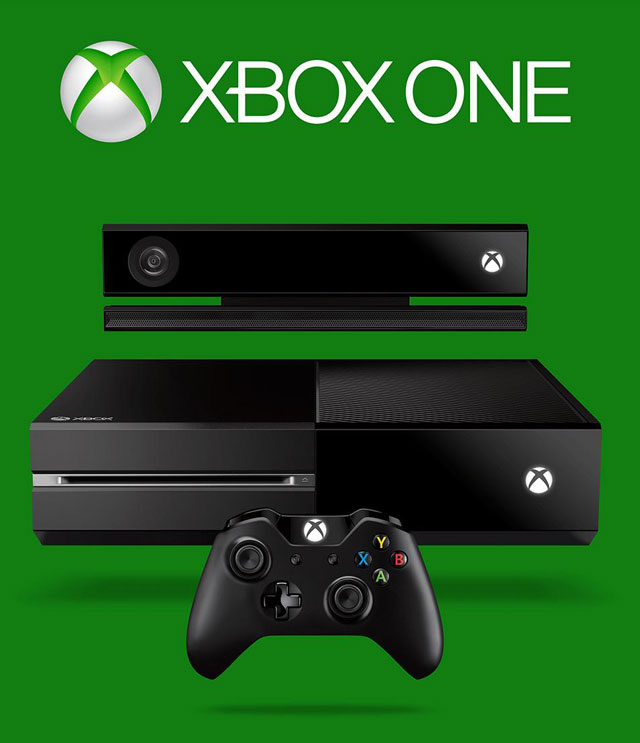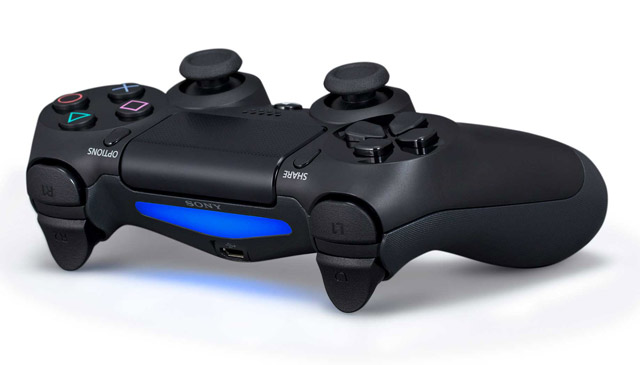
A couple of weeks ago, I wrote that Microsoft’s arrogance didn’t yet compare to the hubris of Sony with the PlayStation 3 circa 2006 and that the Xbox One reveal in May wasn’t its giant enemy crab moment. Nope, it wasn’t, but after the Electronic Entertainment Expo (E3) this week in Los Angeles, the company’s Xbox division is neck-deep in PR blunders as big as Sony’s outsized crustaceans.
At the expo, where the gaming industry gathers every year to present the hottest games and hardware, Microsoft and Sony set out the roadmaps for the release of their competing next-generation consoles later this year. After gamers gave a hostile reception to the Xbox One announcement briefing and its focus on the future of TV, Microsoft vowed that E3 would be all about games for the gamer.
The software giant entered the E3 coliseum bloodied by weeks of bad PR about draconian digital rights management (DRM) policies planned for the upcoming Xbox One — particularly new restrictions on the lending, renting and resale of physical media games. Here, it needed to impress early adopters with compelling games as well as try to soothe their fears about DRM.
In its conference, Microsoft came out swinging with a selection of games that seemed impressive at first glance. But then it dropped the bombshell — a hefty US$499 retail price for the Xbox One in a market where new gaming consoles such as the Nintendo Wii-U and PlayStation Vita are already struggling in the face of competition from tablets and smartphones.
The bad news has piled on since — a continued lack of clarity about DRM; a very limited global roll-out of the console (only 21 countries will get it this year and South Africa isn’t one of them); and a bizarre hard-line stance on regional locking of content. What’s more, Microsoft has deliberately obfuscated answers to key questions such as whether it will use IP-blocking to prevent importers in countries outside launch territories from buying its product. It’s almost as if the company has already given up on the fight everywhere outside the US, UK and Canada.
Fleeing from the press
Ahead of the event, trouble was already brewing for Redmond. A day or two before E3, news started circulating that Microsoft had cancelled one-on-one interviews with many key gaming journos as well as a media roundtable. It was generally thought that Microsoft wanted to avoid the hard questions about used games, online requirements, TV and the power of its hardware.
As it turns out, limiting face time with the press was one of the few smart things Microsoft has done since it announced the Xbox One. In the few interviews granted, Xbox honchos opened their mouths mostly to change feet. The content and delivery of their responses to legitimate concerns about the platform were supercilious, condescending and out of touch.

Don’t have a good broadband connection? Be grateful that you can still buy an Xbox 360, you peasant. Should Microsoft care what customers think about its product? No, because this is not a sprint, it’s a marathon. Also, it is customers who are uneducated and scared of change, not Microsoft who has complex terms and restrictions it is communicating in an unclear and dishonest manner.
Did Microsoft bring the games as promised? Yes and no. There are promising exclusive titles in there — like Remedy’s television series and game, Quantum Break, yet another Halo, and Insomnaic’s colourful shooter Sunset Overdrive, but we’ll probably be waiting a year or more to play them. And the most appealing “exclusive” game — Titanfall from Call of Duty creators Infinity Ward — will also be on the Xbox 360 and PC when it launches mid-2014.
Of the launch window exclusives, Forza 5 looks decent, but not groundbreaking, Dead Rising 3 loses the goofy humour of its predecessors, and the return of the beloved Killer Instinct franchise comes with the drawback of a potentially obnoxious free-to-play charging model.
Ryse, which has been in the works at Crysis developer Crytek for seven years, sounds like an expensive flop. Ditto Crimson Dragon, which, like Ryse, started out development as an Xbox 360 game. And smaller games like Project Spark and D4 received such offhand treatment that it’s hard to say what they will be like. There is simply no good reason to buy an Xbox One yet, considering its price tag and drawbacks.
The haymaker
A few hours after the Microsoft presser, Sony took the stage to present its launch plans for the PlayStation 4. Most of the press conference was pedestrian, focusing on games we’d seen before, but towards the end of the show Sony staggered Microsoft with a haymaker that was beautiful to watch.
With two PowerPoint slides — one detailing a $399 price point, another promising no new DRM or used games restrictions — Sony hit the most vulnerable parts of Microsoft’s strategy. Amid the excitement, no one seemed to notice that the games Sony presented were mostly lacklustre or not exclusive to its platform. (To be fair, Microsoft has already announced most its line-up for the next year, while Sony has said little about what we can expect from its own studios beyond the PS4 launch window.)
Sony is writing the narrative for the next skirmish of the console war, and it has cast itself as the hero championing the consumer, the games developer from the one-man indie operation upwards, and the gamer. Reality is more complex, of course. Sony is just claiming the easy marketing win Microsoft handed to it.
Sony knows all too well that the issues of used games and licensing physical media will go away as digital downloads take over in the next decade, making it a silly fight to pick with gamers. And it’s not like Sony is really doing anything truly radical for consumer rights like discouraging publishers from using DRM protections of their own.

But the following can be said about the Sony PlayStation that is no longer true of Microsoft Xbox. It might not be a charity, but at least Sony is thinking about the world from the perspective of its customers.
Where Xbox’s best brains have all left — Robbie Bach, J Allard, Peter Moore — Sony’s strategists are on top of their game. And Sony knows there’s more to the world than America — heck, it seems even we will see the PS4 later this year when it’s launched. Perhaps most importantly, Sony has a clearer sense of its purpose and heritage as a gaming company than it has had for years.
In many respects, Sony and Microsoft have reversed the positions they held in the PlayStation 3 and Xbox 360 generation. Just like the PlayStation 3, the Xbox One is less a product designed for people who play and develop games than a Trojan horse for the technologies a corporation wants to sell them.
Controlling the future
The PS3 was about controlling the future of physical media with Blu-ray; Microsoft hopes to use the Xbox One to carve out more market share and reassert its relevance as a consumer company in a post-PC world. The Xbox One is about pushing stuff that no one really asked for on their televisions, like Azure and Bing and Skype and the Kinect motion-sensing camera.
Probably at least partially due to the Kinect camera and HDMI-in port shipped with every Xbox One, the machine is more expensive and yet marginally less powerful as a games machine than the PlayStation 4. Microsoft wants to use it to compete with everyone — Sony, Google, Apple, Amazon, Valve — and the result is a muddled message and a compromised console.
Killzone Shadow Fall will be the big launch title for the PS4:
Sure, Microsoft is not going to exit the gaming market any time soon, particularly given its current dominance in North America. It has enormous goodwill among developers and publishers who made a lot of money from the Xbox 360, meaning it won’t lack for Xbox One content. And it could still change course about the most unpopular elements of the Xbox One as it has about Windows 8. But it had potential to do so much better with the Xbox One than it will after the early fumbles.
The final takeaway from E3? Neither Sony nor Microsoft has really given any good reason to buy their new consoles this year. The PS3 has a crackerjack set of exclusives for this year — games like Gran Turismo 6, Beyond: Two Souls, The Puppeteer and The Last of Us look more interesting than most of the content for the new consoles.
Even the best-looking multiplatform games for the PS4 and Xbox One — Assassin’s Creed 4, Watch Dogs, Call of Duty: Ghost and so on — will be available for the PS3 and 360. For now, the most entertaining part of the next generation is watching a fight where one of the contestants is repeatedly punching itself in the face. — (c) 2013 NewsCentral Media
- Read more: Why did Microsoft do it?




